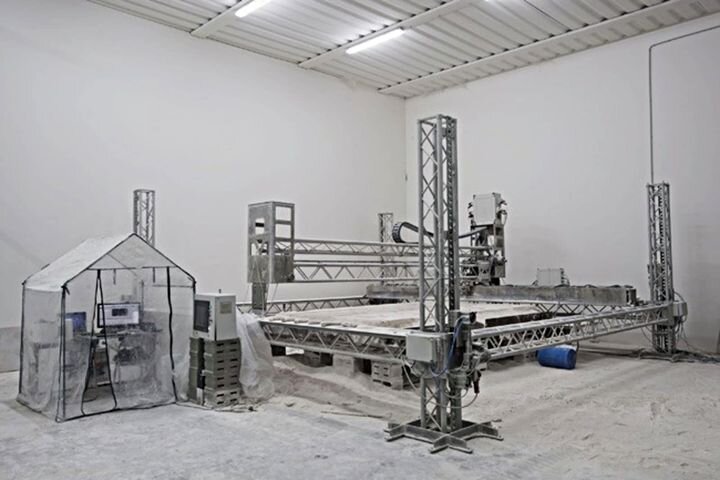
The number one material used in the global construction industry is concrete.
Concrete is expensive to use for construction, mainly due to the cost of creating formwork. The formwork is also a huge source of waste in the construction industry, as it is all thrown away at some point during every construction project. By some estimates, the construction industry is responsible for creating as much as 80 percent of the world’s total waste.
Architects and designers are also constrained by the geometric limitations of casting concrete into formworks—unless they have the budget to have customized formworks created, which can be prohibitively expensive.
Can 3D printing solve these problems?
Problems with traditional construction methodology
The laundry list of complaints with the concrete construction industry is well known. Lead times are difficult to predict and control, there are persistent safety issues (worker injuries and deaths), issues with manufacturing formworks on job sites, issues with manufacturing offsite and issues transporting materials. These add up to a very slow, wasteful process which uses a huge amount of energy and is ecologically unsustainable.
In civil engineering, using precast procedures or casting in place at the jobsite are the preferred methods of creating structural members that will support a building, bridge or home. A variety of materials are used to create structures, but they always include concrete and masonry. Ordinary Portland Cement (OPC) is the main material for construction-grade concrete.
Engineers and architects have been working on experimental construction-grade additive manufacturing to explore ways to reduce the costs, lessen waste and improve the efficiency of legacy construction techniques. Rethinking techniques for creating structural members had led structural engineers, civil engineers and architects to explore different types of construction-scale 3D printing.
Construction-Scale 3D Printing
There are several methods of construction-scale 3D printing: selection paste intrusion, binder jetting and selective binder (cement) activation. Binder jetting is also known as inkjet printing or binder printing.
It works by depositing layer-by-layer a powder-based material and an activator to create a scaffold. This is the most commonly used 3D printing method for construction-scale projects and is based on the work on Enrico Dini, inventor of a construction-scale 3D printer called D-Shape.
D-Shape’s binder jetting 3D printing works like any other 3D printer, starting with a CAD file and slicer software. The digital slices are sent to the D-Shape printer, which is nestled in a 6m x 6m aluminum frame with a square base.
The base travels upwards while printing, powered by a stepper motor on four vertical beams. The printer head has 300 nozzles spaced 20 mm apart. An aluminum beam connects the printer head to the base. The printer head deposits a layer of sand and magnesium oxide along the area enclosed by the frame.
Next, the printer head deposits an inorganic solution that contains magnesium chloride. This causes a chemical reaction, and within 24 hours, the material solidifies. There are gaps in the sand deposition due to the 20mm gaps between each of the 300 nozzles.
A piston on the printer head’s beam moves the printer head perpendicularly back and forth four times to ensure an even distribution of sand. Then it repeats the process for each layer. The sand needs to be continuously refilled and the final product needs to be removed from excess sand that surrounds it, similar to the way industrial laser 3D printing post-processing methods.
Read more at ENGINEERING.com

